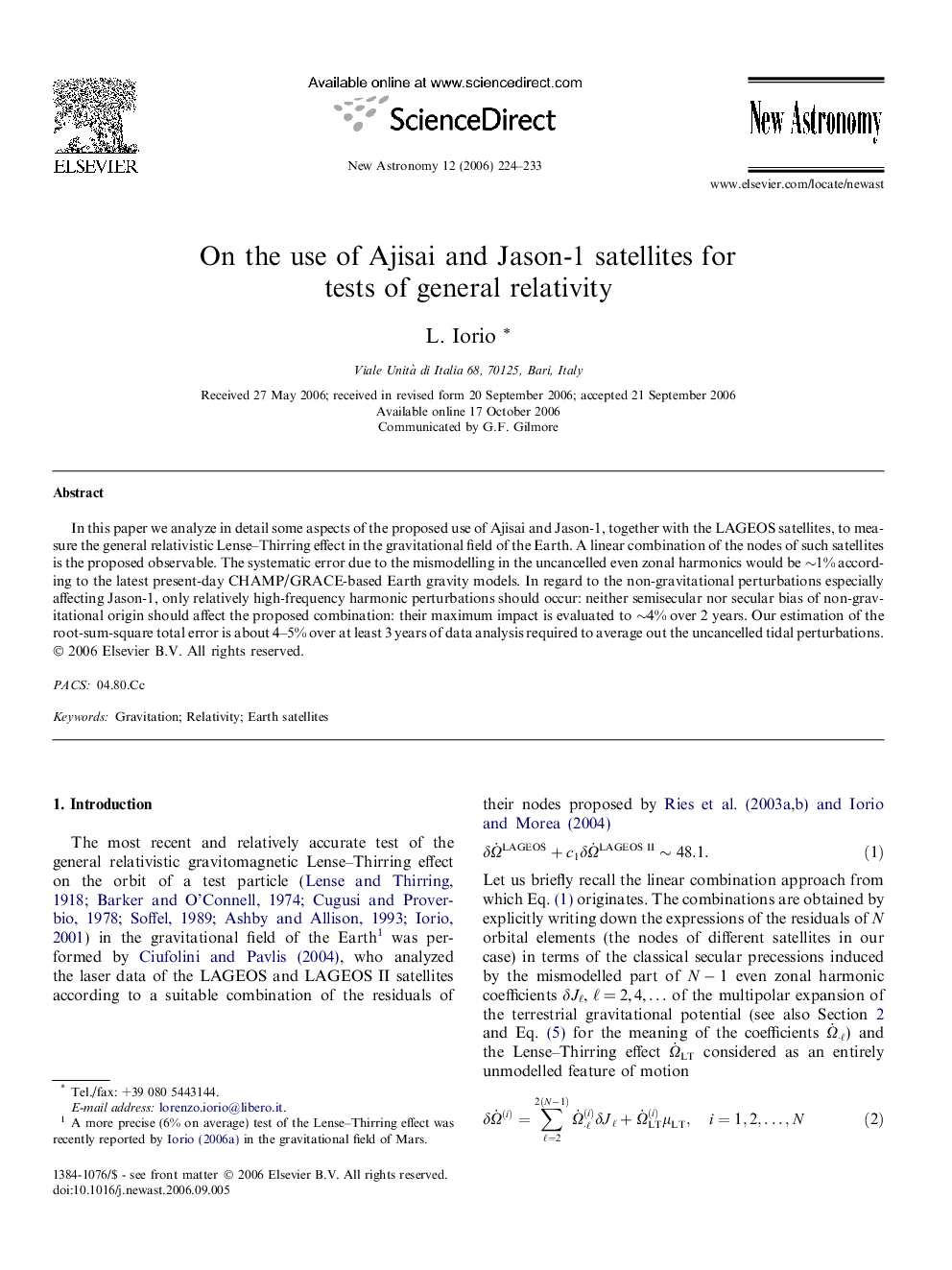| Article ID | Journal | Published Year | Pages | File Type |
|---|---|---|---|---|
| 1779454 | New Astronomy | 2006 | 10 Pages |
Abstract
In this paper we analyze in detail some aspects of the proposed use of Ajisai and Jason-1, together with the LAGEOS satellites, to measure the general relativistic Lense-Thirring effect in the gravitational field of the Earth. A linear combination of the nodes of such satellites is the proposed observable. The systematic error due to the mismodelling in the uncancelled even zonal harmonics would be â¼1% according to the latest present-day CHAMP/GRACE-based Earth gravity models. In regard to the non-gravitational perturbations especially affecting Jason-1, only relatively high-frequency harmonic perturbations should occur: neither semisecular nor secular bias of non-gravitational origin should affect the proposed combination: their maximum impact is evaluated to â¼4% over 2 years. Our estimation of the root-sum-square total error is about 4-5% over at least 3 years of data analysis required to average out the uncancelled tidal perturbations.
Keywords
Related Topics
Physical Sciences and Engineering
Physics and Astronomy
Astronomy and Astrophysics
Authors
L. Iorio,
